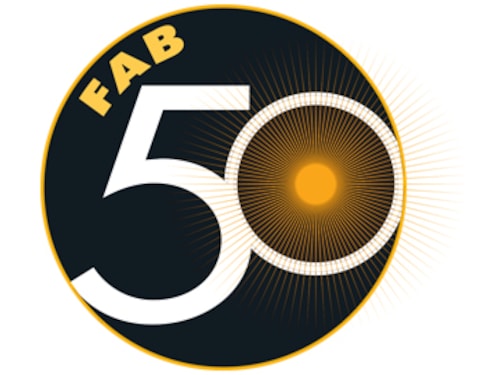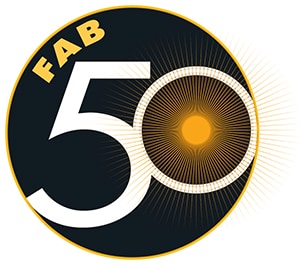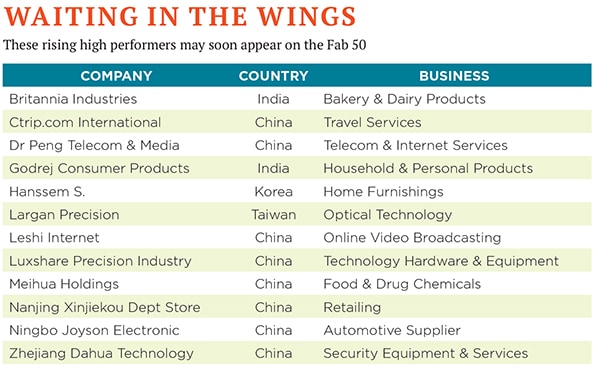Fab 50's brightest stars: China dominates
Despite slowing growth and tanking markets, Chinese companies account for half of the list


This marks the 10th anniversary of our first Fab 50 list, and a look back shows the changing nature of business in the region. In 2005, Japan produced the most companies, 12, and Australia was second, with 10. This year, Japan has just one and Australia none. Hong Kong had five on that first list and this year, it also has none. The industries represented then were tilted toward heavy industry. There was one pharmaceutical or health care company this year, there are nine. Only one company from 2005 makes this year’s list, Lenovo. The Fab 50’s brightest star over the decade, India’s HDFC Bank, did not debut until the following year it’s now made the list nine times, more than any other company. For the fifth year in a row, India claims the second-highest number of companies, 10 this time. South Korea is next with four. But one South Korean company that’s been a regular on the list, Naver, failed to make the cut, ending a six-year streak. Naver isn’t alone: More than half of last year’s list did not repeat in 2015. That made room for 23 first-timers and three outfits that returned to the list after falling short in the last year or two.
We choose the Fab 50 from a pool of 1,116 companies that have at least $3 billion in annual revenue or market cap. Companies must be publicly traded for at least a year, so Alibaba, which listed last September, will get its first chance next year. We use more than a dozen financial measures to size up the contenders and then throw out any that carry a lot of debt or are more than 50 percent state-owned. Companies that are more than 50 percent owned by listed parents are also culled. The goal is a lineup of high performing entrepreneurial blue chips, the region’s best of the best.
First Published: Aug 11, 2015, 06:10
Subscribe Now
 (Reporting by Grace Chung, Zheyan Ni and Anuradha Raghunathan)
(Reporting by Grace Chung, Zheyan Ni and Anuradha Raghunathan)